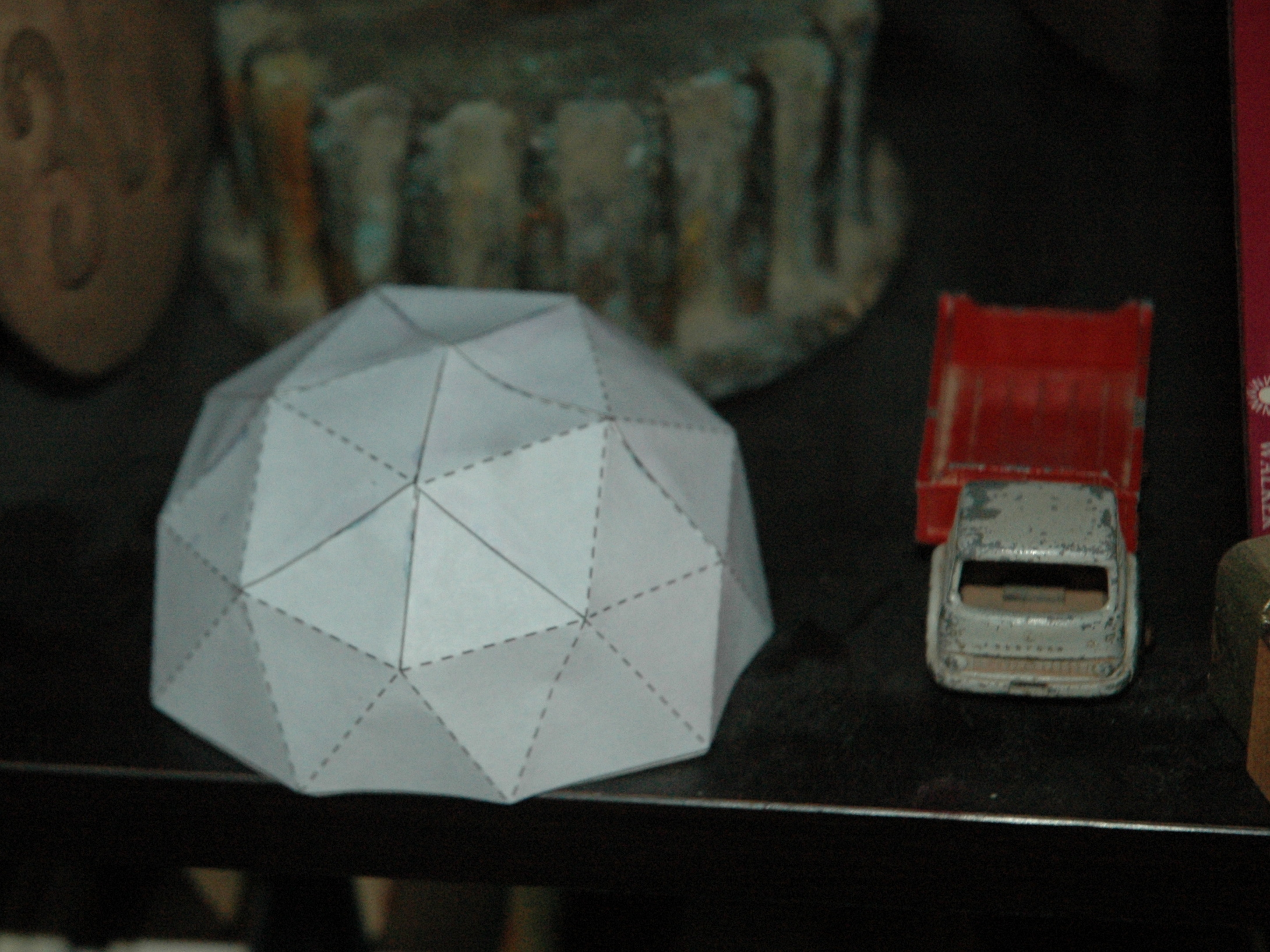After SketchUp, the .STL exporter and Pepakura have been installed it is time to try a simple model. I went to http://sketchup.google.com/3dwarehouse/ and chose “Geodesic dome 01” from the menu, saved it to my desktop and opened it with SketchUp. It looks like this.
Begin by pulling down the Tools menu and clicking on Export to .DXF or .STL.
The following menu will ask you whether or not you want the entire model exported; click Yes.
Click on any unit (Pepakura scales to page).
On next box, click on .STL in drop-down menu. Continue.
Save file where you can find it.
Open Pepakura.
Once Pepakura is open pull down the File menu and click Open. Select the .STL file you just saved.
Pepakura will ask you if you want to flip faces; click No (unless you do want to).
Pepakura will ask you which side is front and which side is top by face color. Choose correct colors and continue. It will ask you one last time to flip. Select No if correct and continue.
Your page should now look like the image shown, with bottom of dome on ground.
Now click on the Unfold box at top.
Your dome is now “unfolded” !!
Go to 2D settings and increase scale several times until it fits the page.
Use the menus to rotate, adjust tabs, etc. until the dome is the way you want it.
Print!
Once the model is printed you need to cut it out.
Dashed lines are fold lines and solid lines are cut lines.
All solid (cut) lines need to be cut, even if they seem to intersect other parts.
You may now fold and glue. Remember that the folds you make for the dome should be sharply creased but only bent slightly as the angles on the dome are slight. It will take practice to determine what is right.
You may also want to find or make a folding tool for small folds. I was able to use my fingers when folding the dome but this won’t be possible on some other models.
You can now take the knowledge you have gained and apply it to other things!
You might try printing paper patterns, gluing them to sheet metal and screwing or welding the parts together.
You might also try printing things and enlarging them with an opaque projector onto large sheets of vinyl, cloth or plywood to make larger objects.
The possibilities are endless!
Conclusion
I hope this guide has been useful. Feel free to contact me with questions. I can be emailed at ObjectsUnlimited (at) Gmail (dot) com or via twitter @Protobotind .
Thanks!











